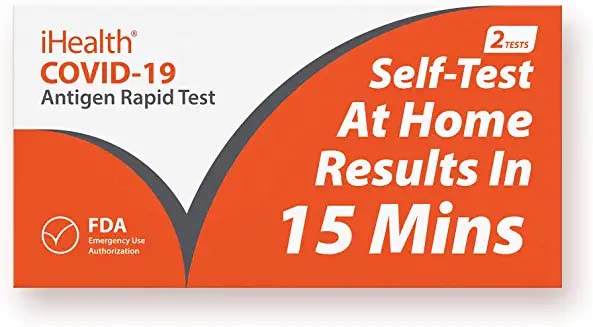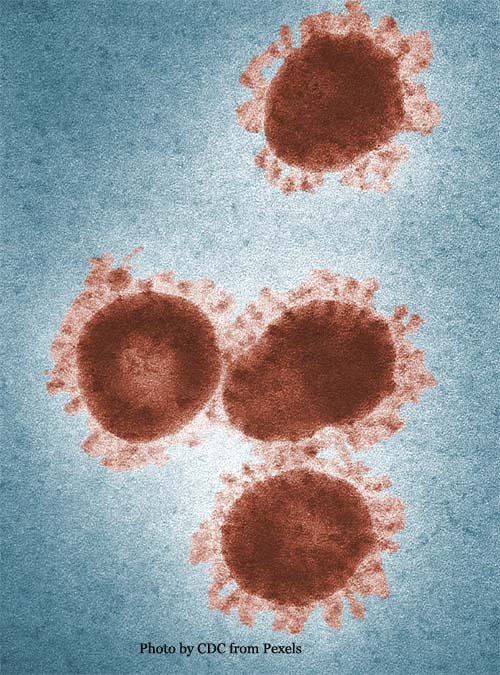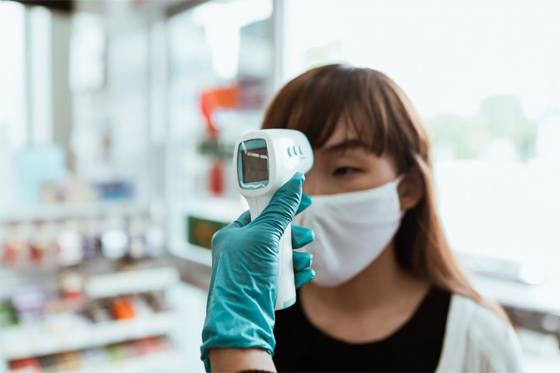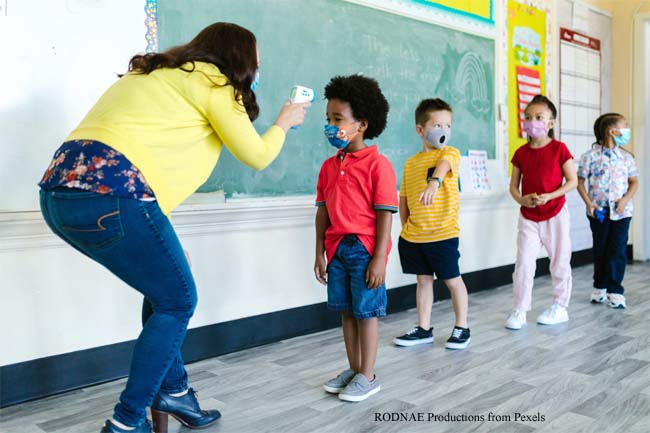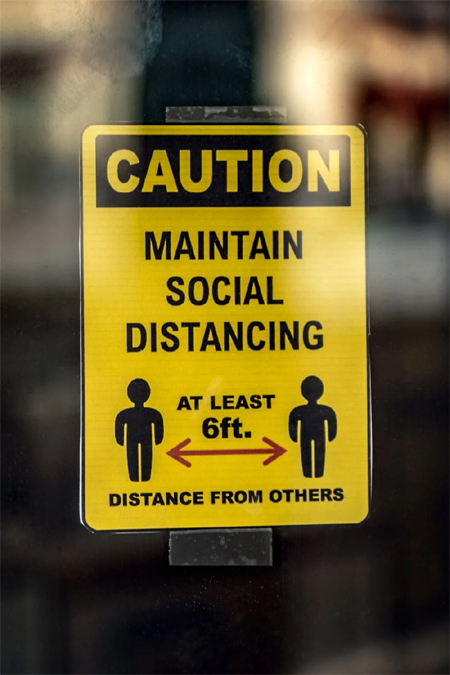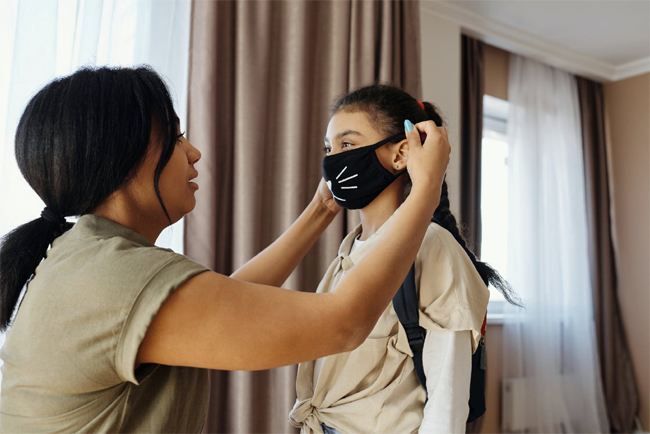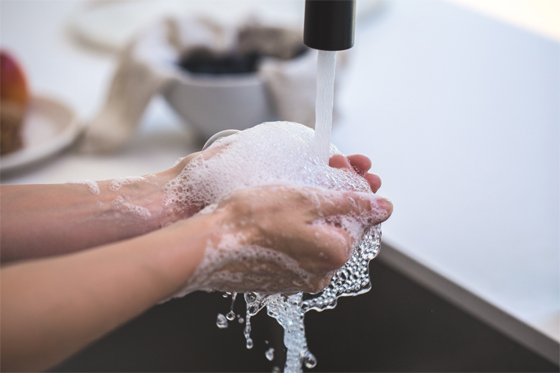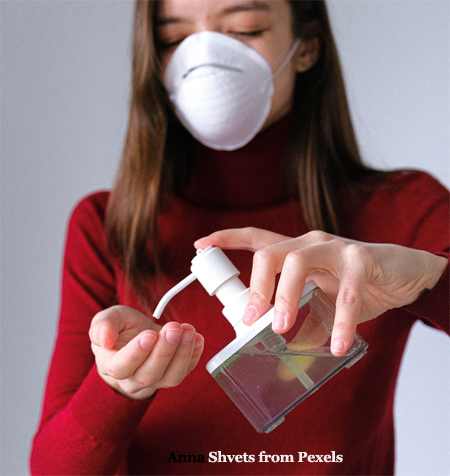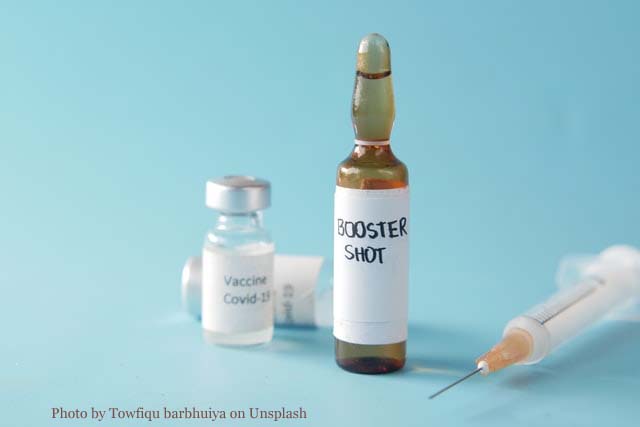COVID-19 Tests
There are currently (as of February 2022) 3 types of COVID-19 tests available to identify COVID-19 infections. They are the PCR or Polymerase Chain Reaction Test, the Antibody Test, and the Antigen Test, including the Rapid Antigen and At-Home Rapid Antigen Tests.
Please note: These tests are available as of the end of January 2022. Currently, they can detect the original SARS-CoV-2 virus and both the delta and omicron variants. They may or may not be as accurate for any future variants.
THE VALUE OF COVID-19 TESTS
COVID-19 tests can cut down infections in the community by identifying people who may be a threat to others and advising them to self-isolate.
Unfortunately, conflicting messages about these tests, along with shifting CDC guidance on quarantine periods, has made it very confusing for people to navigate this stage of the pandemic.
In this article we offer information about the currently available tests—what they are, how they work, and the advantages and disadvantages of each.
THE PCR COVID-19 TEST
What It Is
The PCR or Polymerase Chain Reaction test is the gold standard for detecting the presence of COVID-19 in bodily secretions. It is a molecular test that measures specific genetic material from a virus that has entered the body. The PCR test can identify pathogenic organisms that are difficult to culture by detecting their DNA or RNA and then amplifying it.
How It Works
The PCR test is done by collecting material from the nose or throat using a long swab. The resulting genetic material is sent to a lab to be amplified. The amplification technique is called a polymerase chain reaction (PCR). This process allows the PCR test to detect even the smallest amount of coronavirus genetic material in a sample, making it a highly sensitive and accurate test, approaching an accuracy of 100%.
Advantages of the PCR Test
- The PCR test is quick and easy, providing very accurate and reliable results in detecting a current infection.
- If symptoms are present or a known exposure has occurred, the PCR test can accurately detect a current infection, but only as long as there is enough genetic material available. It should be done 2 to 5 days after symptoms are present or a known exposure has occurred.
- The results are typically available in 1 to 3 days. Although there are rapid PCR tests available with faster results, they are not as common.
Disadvantages of the PCR Test
- It requires samples to be sent to a lab (usually a large, centralized testing facility such as a hospital lab with a skilled laboratory and special equipment) and delivery of results may take days.
- The length of time for results makes the technique impractical for screening asymptomatic individuals who may have been exposed. Unfortunately, such individuals, even though they exhibit no symptoms, can still transmit the virus to others.
- If the development of the COVID-19 infection is very recent, the level of the virus may be too low to properly detect it.
- The PCR test is so extremely sensitive that it may give a positive result even after a person is no longer infectious since remnants of genetic material from the virus can still be floating around.
THE ANTIBODY COVID-19 TEST
What It Is
The Antibody test is a blood test.
How It Works
Certain foreign substances (called antigens) from either outside the body (such as viruses, chemicals, bacteria, toxins) or inside the body (such as cancer cells) produce an immune response in the form of the production of specific antibodies to those specific antigens. The antibodies bind to those antigens and neutralize them. This knowledge is stored in the immune system’s long-term memory and if the antigen should attempt to attack again, the body will launch antibodies against it.
Material for testing is blood drawn from a finger or an arm and sent to a lab to measure with results available in 1 to 3 days. If the results are positive, a person may have COVID-19 antibodies in their blood with a good chance that COVID-19 had occurred in the past or there was at least exposure.
If the results are negative, there are no COVID-19 antibodies in the blood. Therefore, it may be assumed that the individual has not had COVID-19 in the past, although we do not have enough data to know how long COVID-19 antibodies remain in the body after an infection.
Advantages
Antibody tests are crucial to understanding how our population may adapt to the virus and how those with antibodies respond to other variants.
Disadvantages
- The antibody test needs to be done in a lab, testing center or a hospital.
- Antibody tests commonly produce false negatives and false positives. It takes one to three weeks after an infection for antibodies to be detectable. In the months after an infection, antibody levels may decrease below the detectable level.
- A negative result can suggest that there has not been a recent COVID-19 infection but it doesn’t prove that there has been no prior or current infection because antibodies could be present at levels below the test’s threshold for detection, or, as mentioned above, the antibodies from a previous infection may no longer be present in the body.
- It is best to repeat the test to confirm the results and continue to follow public health guidelines regardless of the results.
If an Individual has been vaccinated and an antibody test shows no antibodies to COVID-19, is this a sign that the vaccine is not working?
The answer is: If a vaccinated individual’s antibody test shows that there are no antibodies to COVID-19 in the body, this should NOT be a sign that the vaccine is not working. Here is why...
- Antibody blood tests detect antibodies to different parts of the virus. Some antibody tests do not detect antibodies from the Pfizer, Moderna, and J&J’s COVID-19 vaccines, which were developed against the spike protein of the virus only.
- Some antibody tests are meant to detect antibodies to a different part of the virus, such as the nucleocapsid protein. These antibodies are produced in response to infection, not in response to the antibodies produced by the current vaccines.
- What we currently do not know is how long or what type of antibodies exist in a person’s body following a COVID-19 infection and how many antibodies are needed to neutralize SARS-CoV-2 following another exposure. It cannot be assumed that if antibodies are present indicating a past infection that vaccination and other health measures are no longer necessary.
- What we currently do know is that the omicron variant can evade preexisting immunity from both the COVID-19 vaccines and from exposure to other COVID-19 variants.
THE ANTIGEN COVID-19 TEST DONE IN A LAB, CLINIC, or HOSPITAL
What It Is
An antigen test is also known as a ‘lateral flow test.’ Unlike the PCR test, it does not detect genetic material, but can rather identify specific proteins on the surface of the COVID-19 virus.
How It Works
Material for testing is typically obtained by a nasal swab.
Lab-made antibodies search for antigens from the SARS-CoV-2
virus. The antibodies bind to the antigens and the antigen-antibody reaction
produces a colored line on a test strip much like a pregnancy test.
Advantages
This is COVID-19 test that may be available if a PCR test (which is more accurate) is not readily available. If the result is positive, a person is immediately alerted of the need to self-isolate and to inform contacts of possible infection.
Disadvantages
- Since the test does not amplify the amount of virus in the sample as the PCR test does, there needs to be a high viral load to test positive. Some studies have shown that rapid tests may be negative the first day or two of symptoms.
- It takes at least 2 to 5 days for the virus to multiply sufficiently to produce enough of the target protein. Before that, if a person tests negative, the nasal secretions may not contain enough virus for a positive test but there may still be enough virus being emitted to infect others.
- Whether the result is positive or negative, the test should be repeated again in 2 days or confirmed with a PCR test.
THE RAPID AT-HOME ANTIGEN COVID-19 TEST
What It Is
The rapid at-home COVID-19 test is an antigen test which can be easily administered by an individual anywhere with results available in fifteen minutes.
How it Works
Material is collected by the individual with a nasal swab.
Advantages
This test works the same as any antigen test done in a lab but with many obvious advantages of convenience compared to going to a test center or hospital to receive an antigen, PCR or an antibody test with the possibility of long waiting lines at a test center and as many as 3 days’ wait times for results.
Disadvantages
- These rapid at home antigen COVID-19 tests are often not reliable. Since the nasal swabs can be uncomfortable, many people may pull back or not insert the swab far enough to successfully detect any infection. Although the actual procedure is fairly simple, it is important that explanatory videos of tests be included to make sure the swab gets an adequate sample.
- Another disadvantage of the rapid at home antigen COVID-19 tests is that some people who have COVID-19 do not test positive. If the test is done too early in the course of the infection, there not be enough replicating virus in the nose for the test to detect it. If the test is done too late after symptoms start, the viral load may be decreasing and also be undetectable.
- Current data from rapid at home antigen tests show they are more accurate if done in the first week of infection and have a sensitivity rate (ability to correctly identify everyone with COVID-19 as positive) of 85% (meaning out of every hundred infected people tested, 15 will get a false negative) and a specificity rate (ability to correctly identify everyone without COVID-19 as negative) of 99% (out of 100 positive tests, only one will be false). Thus, false negatives are common but false positives are not. If a test comes back as positive, it is quite certain that the person is harboring a significant viral load and is infectious.
- Generally speaking, the rapid at-home antigen COVID-19 tests are very good at ruling in the disease, but perform less well at ruling it out, especially in asymptomatic individuals.
- WARNING! A NEGATIVE RAPID TEST IS NOT A LICENSE FOR CARELESSNESS! If used properly along with all other public health measure, these tests, rather than used as a justification to throw caution to the wind and to start holding large parties, can help reduce viral spread. A negative test means that an individual is less likely to infect others, but says nothing of that individual’s risk of being infected.
EXAMPLES OF APPROPRIATE USES FOR RAPID AT-HOME ANTIGEN TESTS
1. If a person has been to a gathering and is concerned that someone there may have been shedding virus, but still feels fine.
In this situation it would be best to wait until at least 2 days have passed and then do a rapid test. If it comes back positive, immediately isolate because false positives are rare. To absolutely confirm infection, a PCR test would be in order.
If the rapid test is negative, there may still be an active infection because 15% of the time there will be a false negative. Repeat the test a day or two later. If that is also negative, the chance of infection is small.
The data shows that sequential negative tests come very close to PCR tests in sensitivity (ability to correctly identify everyone with COVID-19 as positive). In fact, when groups of students, employees, or athletes are tested every few days, the rapid tests can identify 98% of infections!
2. If an individual has been in contact with others and is experiencing minor symptoms like coughing, sneezing, sore throat or fever.
The question is whether or not the symptoms are from a cold or the beginning of COVID-19. In this situation, it is best to assume that it is COVID-19 until it can be ruled out.
Once symptoms are present, the sensitivity of the rapid test (its ability to positively identify COVID-19) will be increased.
If the test is indeed positive, then it is very likely that this is not just a cold and the individual should immediately isolate and contact those he or she may have been with.
A PCR test can be obtained to confirm the positive result or the rapid antigen test should be repeated in 2 days. If the result is positive, definitely confirm with a PCR test. If the rapid test is negative, repeat it in 2 days and if it is still negative, then COVID-19 is unlikely.
3. An individual may want to visit an older family member or attend a small gathering.
In this situation, the test should be done just before the event. The reason is that a 2 day old test is unreliable because rapid tests reflect the viral situation only at the time the sample was taken and viral loads can change significantly from day to day.
If the test is positive, the visit should be cancelled, self-isolation should be initiated, and the results should be confirmed with a PCR test.
If the test is negative, it would suggest a low viral load at that point in time and the risk of being infectious is small.
It is important to remember that even though a test is negative, the risk is not zero because an individual may have been in contact with an infected person in the past couple of days and may have acquired the virus, but it has not had enough time to replicate in order to yield a positive test. If this is the case, some of the virus may be able to be passed on, especially if the infection was due to the omicron variant.
Because the omicron variant replicates so quickly, it is possible for a person to be negative when tested just before a gathering, but if the test were to be repeated within a few hours, it might well be positive.
It is also important to remember that there is a 15% chance the test is a false negative in the first place so there is still some risk associated with that possibility.
On the other hand, since life presents us with continuous risk-benefit evaluations and we take some risks all the time, a gathering where everyone has tested negative presents a very small risk.
4. The Ideal Situation
Unless there has been no chance of contact with anyone, the ideal situation would be for people to take a rapid test every few days. This would identify infected individuals who would then isolate and prevent the spread of the virus. Realistically, this is not practical in terms of hassle or cost.
On the other hand, contracting COVID-19 involves a real hassle and high cost. So the most effective way to reduce the spread of the virus is to limit person-to-person contact and to get as many people vaccinated as possible.
ADDITIONAL QUESTIONS CONCERNING THE RAPID COVID-19 TESTS
1. Do the
Rapid Tests Work for the Different Variants?
Although data is still incoming, the early evidence indicates that the rapid tests work for the original COVID-19 as well as for the delta and omicron variants.
This is because these tests do not involve the spike protein the virus uses to invade a cell but rather look for the virus’ RNA nucleocapsid protein, which is less susceptible to mutations.
With any of the rapid tests, the chance of false
negatives is reduced by repeating the test a couple of days apart.
Of course, there may very well be COVID-19 variants in the future that may necessitate the development of new tests that are sensitive to the new variants.
2. What are the Types of Rapid At-Home COVID-19 tests?
Rapid At-home antigen tests, (for ex. BinaxNow) are available over the counter at a pharmacy (when supplies are available) with results available in under an hour.
Rapid At-home molecular tests (including PCR tests) are generally more accurate than the at-home antigen tests. They detect the genetic material of a virus and work by amplifying any existing genetic material present in a sample, by as much as a billionfold.
These tests can thus detect extremely small amounts of genetic material in a sample making them highly accurate whether or not a person has symptoms. Some of these are available from companies like Cue and Lucira but are pricey and thus not widely accessible to most people.
At-home PCR tests, such as LabCorp’s Pixel are also available, but require mailing the sample to a lab and waiting for a result.
3. Current Cost and Availability of Rapid At-Home COVID-19 Tests
As of January 18, 2022, each household in the US is able to receive 4 free test kits with no shipping costs and no need to enter a credit card number. Click covidtests.gov to order.
The 4 free tests can also be found at the US Postal Service website.
An additional 8 free tests may be available for each household if insurance coverage allows.
WHEN SHOULD AN INDIVIDUAL GET A COVID-19 TEST?
Having symptoms of a COVID-19 infection is an important reason to get a COVID-19 test but it is not the only reason. We now know that a person can be infected with COVID-19 and not have any symptoms (asymptomatic).
Thus, it very important to test for COVID-19 (at a test center or at home) 5 to 7 days after a known exposure. If a test is done too soon, a false negative can occur meaning the virus may not have had a chance to produce enough of a presence in your body for the test to detect.
Therefore, a person should consider getting tested if:
- symptoms of COVID-19 are present.
- close contact with a person who has tested positive for COVID-19 has occurred (contact within 6 feet of that person for 15 minutes or more).
- a person has high exposure to others at work or in their social life.
- a person has been exposed but has no symptoms, the individual should consider getting tested five to seven days after the exposure.
IN ANY EVENT…
If you feel you are in need of medical attention or are experiencing a cough, fever, difficulty breathing, sore throat, loss of taste/smell, chills/muscle pain and/or gastrointestinal symptoms, self-isolate and contact your doctor as soon as possible.
WHAT SHOULD YOU DO WHILE WAITING FOR TEST RESULTS?
- If symptoms are present even if you are vaccinated and boosted, act as though the test is positive and quarantine.
- If you are not vaccinated and boosted, quarantine after a known exposure until test results are in.
- If exposure has occurred but there are no symptoms, wear a well-fitting, protective mask at all times when around others ONLY IF you have been vaccinated and boosted. Continue wearing your mask for 10 days but try to get a test on Day 5.
WHAT YOU SHOULD DO IF THE RESULTS ARE POSITIVE
- Isolate yourself for a minimum of 5 days and wear a mask for five days after that.
- If you are using an at-home test, take one after 5 days. If still positive, continue isolating. If you do test positive on a home test, you should notify the health department so it can keep track of how many cases your community has.
- The CDC recommends you may end isolation after testing positive as long as your symptoms are resolving, including no fever for 24 hours, and you wear a mask at all times when you are around others.
- If your test is positive and an antigen test is still positive at five days, you are almost certainly still infectious.
- Taking a PCR test to end isolation is not recommended because it cannot differentiate between viable and unviable viral particles so may detect unviable virus after an infection has ended.
THERE IS HOPE...
With the possibility of future mutations leading to new variants (and as of this writing, a new variant has been spotted), it does not necessarily mean that the pandemic is going to get worse.
The process of natural selection tends to favor viruses that are highly transmissible but not those that are necessarily deadliest.
And, it is important to remember that killing one's host is not always a great strategy for survival!
"The Cleanest Clean You've Ever Seen."
by
ABC Oriental Rug & Carpet Cleaning Co.
130 Cecil Malone Drive Ithaca, NY 14850
607-272-1566


